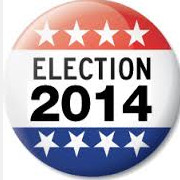Political ad revenue winners and losers in the 2014 mid-terms
Experts say newspapers are gaining, at the expense of radio and the post office
Getting ready to start selling political advertising during the 2014 mid-term election season?
The most savvy political advertising sales teams are already in the field making contacts to pre-sell mid-term election advertising, slated to begin in April.
So why the early push? First, the data shows historic spending levels, with money flowing in from PACs and SuperPacs to help or defend against Republicans taking over the senate or losing seats in the house, in addition to the high profile gubernortorial races and ballot issues. With unlimited cash, some negative ads are running already - in January for congressional elections in November.
Second, more newspapers have their act together, according to John Kimball, of The John Kimball Group, a consulting company with a speciality in political ad sales.
We checked in with Kimball to find out "what's changed" since 2012 and predict the winners and losers in the race for 2014 political dollars.
"We’re looking at a $6 billion-plus mid-term election," Kimball said. "Newspapers have positioned themselves well to take full advantage of the revenue opportunity. (They) will eclipse radio in total ad spend and estimates that show the entire portfolio of newspaper products will reach 10% of the total spend."
That's $600 million all spent over the course of a few months. In fact, newspaper's total spending has already risen between 2002 and 2012 from $50 million to $650,000 million.
Television, of course, continues to own the lion's share of political dollars, but their share is dropping - from 55% to 50% of the total spend, a loss of a whopping $300 million this season.
So what is print doing right?
Granted, Kimball, who consults with print companies on how to sell more political advertising, has skin in the game. But, he says, newspapers are finally playing up their advantages: Dominant web sites, ability to compete with direct mail for inserts, available inventory when television has sold out, access to simple tools that convert TV ads into online ads, and premium products like post-it notes and Spadea wraps.
Newspapers have also become more strategic in their approach, simplifying packages, and making sure they include unique premium elements and new digital options like text and e-mail.
The new 2014 Political Advertising kit at the Richmond Times-Dispatch is an electronic flip book (reviewed here this week), and a good "example of how creative and adaptive they have gotten in aggressively going after this business," Kimball said.
"The (newspaper) industry has made efforts to become much easier to buy so that political advertisers can see quickly what is available and execute the buy seamlessly."
Whether your media is print, radio or television, if you are interested in ramping up your own game using multi-media packages and competitive analysis, we have tools: See a complete guide to maximizing political revenues here.






